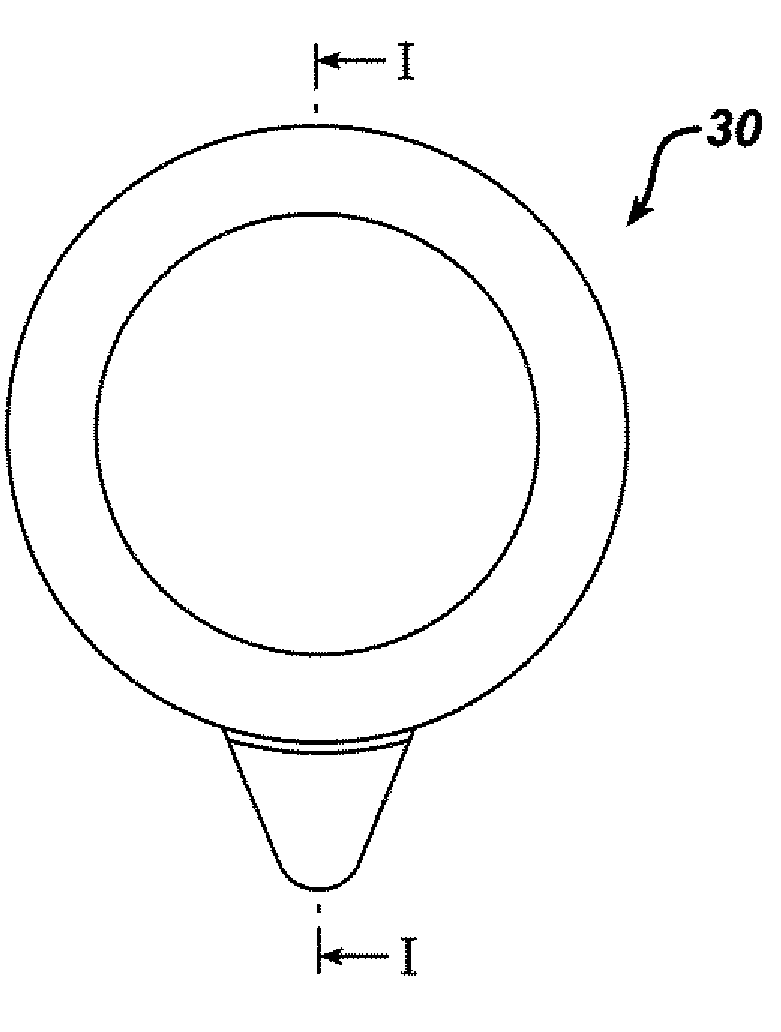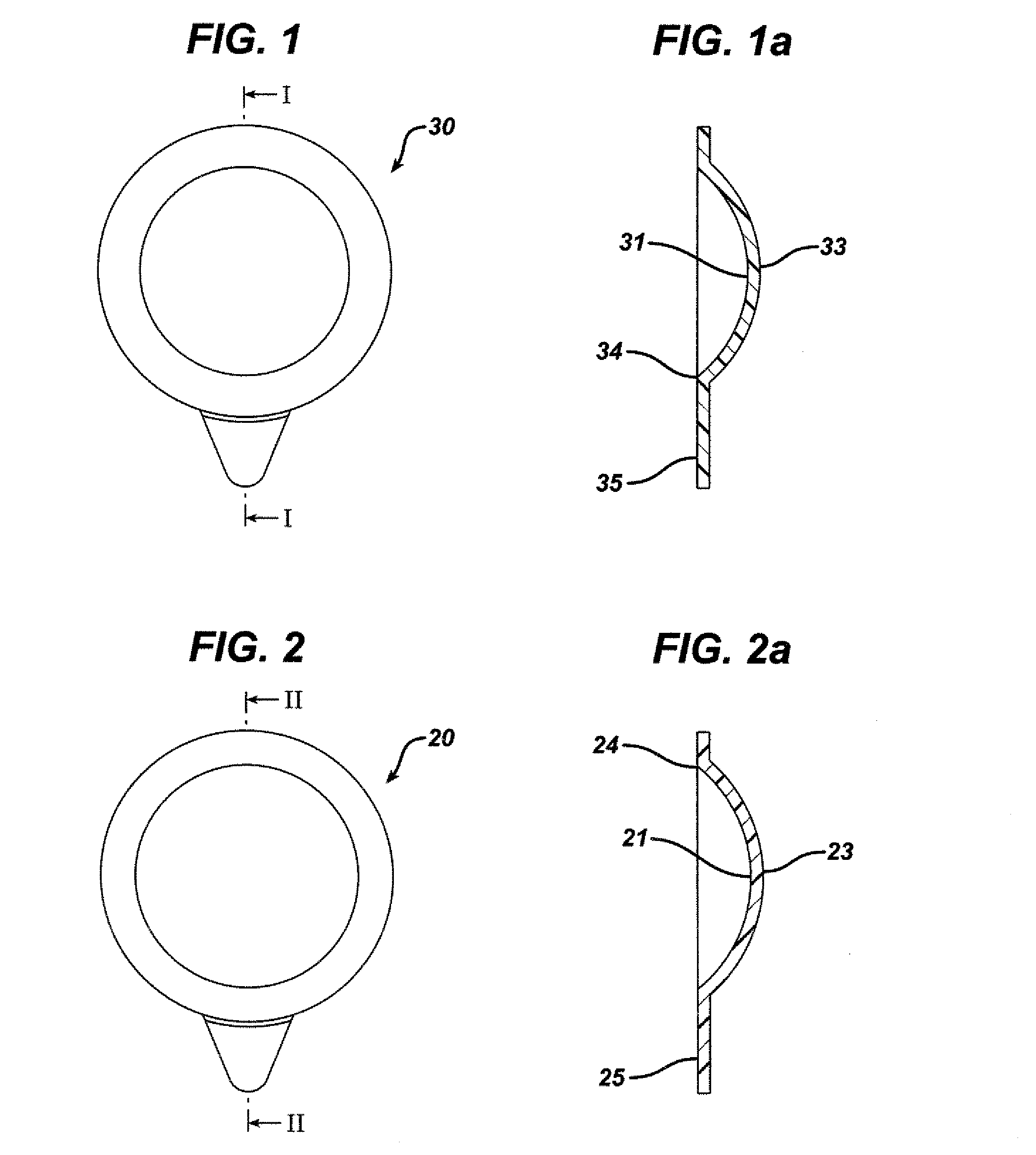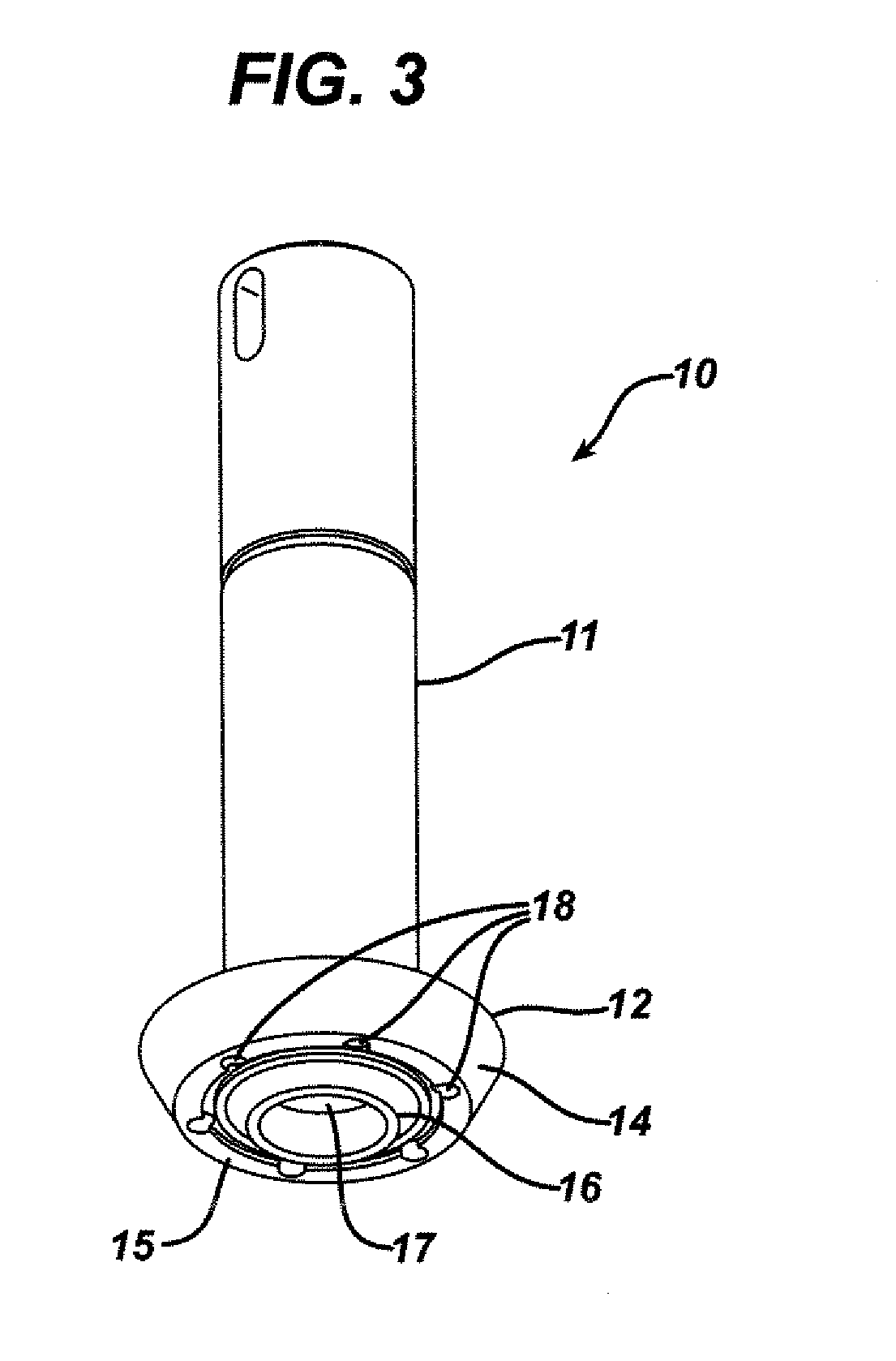Method for stabilizing lens mold assembly
- Summary
- Abstract
- Description
- Claims
- Application Information
AI Technical Summary
Problems solved by technology
Method used
Image
Examples
Embodiment Construction
[0014]The invention provides an apparatus for, and method in which, the flash ring is partially cured at the time the back mold half is deposited onto the front mold half to form the mold assembly. It is a discovery of the invention that, by using high-intensity actinic radiation at the time of assembling the back mold half with the front mold half, the flash ring can be cured to make it sufficiently tacky so that the back mold half will remain adhered to the mold assembly during the subsequent cure process reducing center thickness variations. Thus, in the method of the invention, the pre-cure step is combined with the mold assembly step and the need for a separate pre-cure step is substantially eliminated.
[0015]In one embodiment the invention provide a method comprising, consisting essentially of and consisting of: a) depositing a predetermined amount of a lens material in a first mold half; b.) assembling the first mold half with a second mold half to form a mold and a flash ring...
PUM
| Property | Measurement | Unit |
|---|---|---|
| Time | aaaaa | aaaaa |
Abstract
Description
Claims
Application Information
 Login to View More
Login to View More - R&D Engineer
- R&D Manager
- IP Professional
- Industry Leading Data Capabilities
- Powerful AI technology
- Patent DNA Extraction
Browse by: Latest US Patents, China's latest patents, Technical Efficacy Thesaurus, Application Domain, Technology Topic, Popular Technical Reports.
© 2024 PatSnap. All rights reserved.Legal|Privacy policy|Modern Slavery Act Transparency Statement|Sitemap|About US| Contact US: help@patsnap.com










